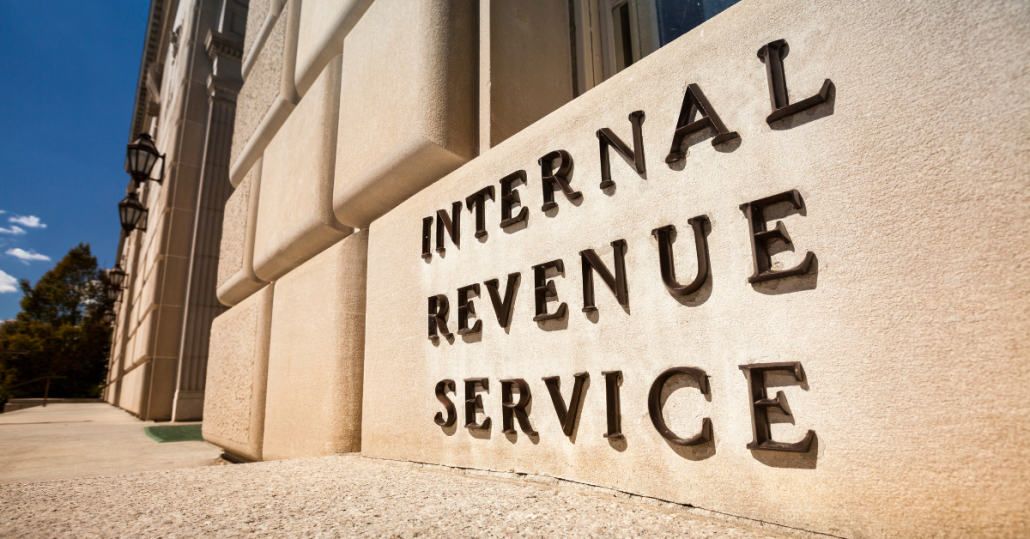Trust-Fund Recovery Penalty
We stand ready to help you navigate this.
Frequently Asked Questions
See the frequently asked questions our tax experts find themselves answering below.
What’s the first thing that people do when they start a business? If you answered they form a corporation or a limited liability company, you are correct. One of the main reasons that people form corporations and LLCs when they start a business is to avoid personal liability for business obligations. But forming a corporation or LLC doesn’t protect the owners of a business from all liabilities. One of the business liabilities that can give rise to personal liability is the trust-fund recovery penalty for unpaid payroll taxes.
The trust-fund recovery penalty (the “TFRP”) is not really a penalty. It is a legal tool that the IRS uses to impose personal liability on the owners, managers, and other people associated with a business for the income tax and FICA tax withheld from employees, or that should have been withheld from employees, that has not been paid over the government.
Section 6672 of the Internal Revenue Code authorizes the IRS to assess the TFRP against any person responsible for collecting, accounting for, and paying over trust-fund taxes who willfully fail to do so. The key concepts are “trust-fund taxes,” “responsible persons,” and “willfulness.”
A trust-fund tax is a tax withheld from employees, specifically income taxes and the employees’ share of FICA tax. A responsible person is any person who has control over the management and finances of a business, usually officers, directors, and persons with signature authority over bank accounts. Willfulness does not require any sort of evil motive. The only thing required is that an expense is paid at a time when the person knew that trust-fund taxes were due.
Even though the IRS can assess the TFRP against more than one person, it is only authorized to collect the unpaid trust-fund tax one time, and once it’s been paid in full, it will be satisfied. And unlike other taxes, the TFRP is not dischargeable in bankruptcy. In addition to the TFRP, there is also the potential for criminal prosecution for failure to collect and pay over trust-fund taxes, which can mean substantial fines and even imprisonment.
Unpaid trust-fund taxes are a huge problem, accounting for billions of dollars in delinquencies each year. IRS enforcement efforts in this area is robust. The Kauffman Group has extensive experience representing clients avoid and settle large TFRPs.
Persons potentially liable for the trust-fund recovery penalty are commonly referred to as Responsible Persons. §6672 of the Internal Revenue Code (“IRC”) defines a Responsible Person as “any person required to collect, truthfully account for, and pay over any [trust-fund] tax . . . who willfully fails to [do so] shall . . . be liable [for the trust-fund recovery penalty].” So does this mean that someone cannot be a Responsible Person unless they are required to perform all three (3) of these functions (i.e. collect, account for, and pay over the taxes)? If that were the case, it would be easy to avoid potential liability merely by making different employees responsible for each of the functions (i.e. one employee responsible for collecting, another employee responsible for accounting for, and a third employee responsible for paying over). Unfortunately, the Supreme Court has already considered this question and decided that a person who is required to perform any of these functions can be a Responsible Person. See Slodov v. United States, 436 U.S. 238 (1978).
What people are typically at risk for being targeted by the IRS as Responsible Persons? IRC §6671 defines the term “person” to include “an officer or employee of a corporation, or a member or employee of a partnership” who is under a duty to perform any of these acts. But one need not be a corporate officer or partner to be targeted as a Responsible Person. The IRS takes the position that “responsibility is a matter of status, duty, and authority.” Factors that the IRS considers in deciding who to target include persons who (a) are corporate officers, (b) have authority to sign checks, (c) have a substantial stake in the business, (d) have control over finances, (e) have authority to hire or fire employees, (f) have the ability to decide what bills get paid and when, (g) prepare or sign payroll tax returns, and (h) are designated in corporate by-laws, partnership agreements, or LLC operating agreements.
But the IRS can get very creative in proposing liability for the TFRP, and has targeted bookkeepers, attorneys, accountants, volunteer trustees, banks, lenders, creditors, contractors, and many others, depending on the facts and circumstances. And the IRS is not limited to targeting just one person. In fact, the IRS frequently proposes assessment of the TFRP against many potentially Responsible Persons within a company, and then sits back while they point fingers at each other.
The IRS casts a wide net when looking for potentially Responsible Persons, but there are affirmative steps that you can take to avoid being targeted. The Kauffman Group has extensive experience representing clients avoid and settle large TFRP.
The IRS casts a wide net when searching for persons who are potentially responsible for the trust-fund recovery penalty (“Responsible Persons”). And to determine who is a potentially Responsible Person, an IRS employee, typically a Revenue Officer assigned to the Collection Division, interviews the business owners, managers, employees, and others to identify which of them are potentially Responsible Persons. When conducting these interviews, the IRS uses a Form 4180, Report of Interview with Individual Relative to Trust Fund Recovery Penalty.
Attached is a link to a version of the Form 4180 that was current on November of 2017, but the IRS updates this form periodically, so it changes from time to time. The Form 4180 identifies the person being interviewed, including contact information and relationship to the business that is delinquent in remitting payroll taxes. It also seeks information about that person’s duties and authority to perform certain functions relevant to whether the person being interviewed is, or other persons are potentially Responsible Persons, which is one of the requirements for imposing liability for the trust-fund recovery penalty. It also seeks information relevant to Willfulness, that is when it was known that the trust-fund taxes were not being paid, and what other bills were being paid.
After interviewing all potentially Responsible Persons, the IRS Revenue Office will determine which of them are Responsible Persons who Willfully failed to collect, account for, or pay over trust-fund taxes. To these persons the Revenue Officer will issue a Form 2751, Notice of Proposed Assessment of the Trust-Fund Recovery Penalty proposing assessment of the TFRP against them. They then have 60 days to appeal this determination, and if they fail to appear, the TFRP will be assessed.
` It is important to prepare for the Form 4180 interview, and to make sure that form as completed by the IRS employee is accurate, true, and complete, because making a false statement can result in criminal prosecution under 18 USC §1001 for making a false statement to a federal employee. Additionally, the IRS will use the information to determine whom should be assessed with the trust-fund recovery penalty. If you wind up in court, the IRS or Department of Justice attorney will use the information to cross examine you.
First, the trust-fund recovery penalty cannot exceed the delinquent trust-fund tax for any period. To calculate the potential trust-fund tax delinquency you will first need to request transcripts of account from the IRS for the employer’s forms 941 for the past four (4) years to determine what periods show balances due. Then for each period, you will need to review the retained copy of the employer’s filed form 941, and calculate the trust-fund portion of the tax (i.e. the income and FICA tax withheld from employees). The potential trust-fund recovery penalty will be the lesser of the total trust-fund taxes on each return, or the balance due for that period. But the actual trust-fund delinquency might be less than that amount, depending on how the IRS applied any partial payments. If you are working with an IRS employee, you can ask them for the amount of unpaid trust-fund taxes, and compare what they tell you with the amounts you calculated.
By way of example, assume an employer files a form 941 that shows a balance due of $100,000, consisting of $40,000 of income tax withheld, $30,000 of FICA tax withheld, and $30,000 of employer FICA tax. Assume also that the employer failed to make any deposits, filed the return 5 months late, and it is now two (2) years later. Because the return was filed late with a balance due there will be a 25.0% penalty for delinquent filing and payment, or $25,000. For simplicity, we will also assume that the deposit penalty is $15,000, additional delinquent payment penalty of $15,000, and interest of $15,000. Finally, we will assume that the taxpayer made a payment of $50,000 after two (2) years. The balance due is $100,000, of which $70,000 is potential trust-fund recovery penalty, calculated as follows:
| Total | Trust | Non-Trust | |
| Income Tax Withheld | 40,000 | 40,000 | |
| FICA (Employee) | 30,000 | 30,000 | |
| FICA (Employer) | 30,000 | 30,000 | |
| Deposit Penalty | 15,000 | 15,000 | |
| Delinquent Filing/Payment | 25,000 | 25,000 | |
| Delinquent Payment | 15,000 | 15,000 | |
| Interest | 15,000 | 15,000 | |
| Subtotal Due | 170,000 | 70,000 | 100,000 |
| Payment | (70,000) | (70,000) | |
| Total | 100,000 | 20,000 |
The trust-fund delinquency (and therefore the potential trust-fund recovery penalty) could be less than $70,000, but it could not be more. Additionally, if the $70,000 payment were made in the correct way, the trust-fund delinquency could be eliminated.
Statutes of limitations generally are among the most misunderstood areas of the law, and statutes of limitations applicable to tax matters are no exception. While a detailed explanation of the law of statute of limitations is beyond the scope of this post, the first important point to understand is that there are many different statutes of limitations in the tax law, the most common being the statute of limitations on assessment of a tax (the assessment statute expiration date or the “ASED”), and the statute of limitations on collection of a timely assessed tax (the collection statute expiration date or the “CSED”). Assessment means recording a tax as a liability on the books of the IRS, and collection means just that - - the satisfaction of a delinquent tax.
The general rule is that a tax must be assessed by the later of the date that is three (3) years after the due date of a tax return, or the date on which the return was filed. But the ASED does not start to run until the return is filed. For the TFRP, the return that starts the ASED running is the employer’s form 941. But the ASED for the TFRP is a bit more complicated, as explained below.
Let’s assume that an employer owes $25,000 in trust-fund taxes for the first quarter of 2019. The due date of that return will be April 30, 2019 (i.e. 30 days after the end of the calendar quarter), so if the return was filed timely, one would assume that the ASED for the TFRP would be April 30, 2022. But that is not the case. The Internal Revenue Code provides that the ASED for a TFRP is three (3) years after the “deemed due date” of the employer’s form 941, and the deemed due date for all four quarterly returns is April 15th of the following calendar year. So, in this example, the ASED for the TFRP would be April 15, 2023. There are many exceptions including for fraud, failure to file a return, and certain other occurrences.
The collection statute expiration date (“CSED”) is usually ten (10) years after a timely assessment. But once again, there are many events that stop the CSED from running, including, without limitations, filing a request for collection due process (“CDP”), while a request for an installment agreement (“IA”) or offer-in-compromise (“OIC”) is pending, and during the pendency of a bankruptcy, to name a few.
These are the general rules of some of the common statutes of limitations applicable to TFRPs, but there are other applicable deadlines and statutes that are important to understand and heed. In dealing with the IRS, it is critical to understand the applicable statutes of limitations, otherwise many opportunities can be lost. Skeen & Kauffman has extensive experience with TFRPs, including determining applicable statutes of limitations.
In a typical trust-fund recovery penalty case there are several events that give rise to appeal rights. The first appeal right arises after a Revenue Officer issues a Form 2751, Notice of Proposed Assessment of the Trust-Fund Recovery Penalty. Upon receipt of this form, the recipient has sixty (60) days to file a protest with the IRS Office of Appeals raising whatever defenses they have. Recognized defenses include the arguments that the recipient was not a Responsible Person, any failure to act was not Willful, the amount of the penalty has been miscalculated, or there were no unencumbered funds sufficient to pay the trust-fund taxes.
After the Protest is filed, there will be an informal hearing conducted by an IRS Appeals Officer. The Appeals Officer will consider all the evidence produced, including the Form 4180, sworn statements of witnesses, and documents, and then issue their decision. If the Appeals Officer sustains the proposal, the penalty will be assessed, and become a personal liability of the Responsible Person.
The next opportunity for appeal arises after the tax is assessed, and the IRS sends a bill (a CP 14 notice of assessment and demand for payment). If you want to challenge the Appeals Officer’s conclusion that you are liable, you can pay a small amount of tax (e.g. the trust-fund tax for one employee for one period), and file a Claim for Refund on Form 843 within two (2) years of making the payment. If the IRS disallows the claim, you can file suit in either the Court of Federal Claims in Washington, DC, or the U.S. District Court in the state where you live. In the District Court you are entitled to a jury trial. Of course, you have right to appeal the Court’s decision if you are dissatisfied. But litigation can get very expensive and is generally feasible only when large amounts of money are at stake.
If you don’t contest the underlying liability, but cannot afford to pay the TFRP, you can file a Request for Collection Due Process Hearing (“CDP Hearing”) on Form 12153 within thirty (30) days of receiving a Final Notice of Intent to Levy or a Notice of Federal Tax Lien. During this hearing you can propose collection alternatives such as an offer-in-compromise or installment agreement. If you file timely Request for a CDP Hearing, you can appeal the Appeals Officer’s Notice of Determination to the United States Tax Court if you are dissatisfied. Typically the IRS will not be permitted to take enforced collection action while an appeal is pending.
Yes, but they are usually recommended in only the most egregious cases. Criminal charges are generally brought under §7202 of the Internal Revenue Code (Willful Failure to Collect and Pay Over Tax), or §§371 (Conspiracy) or 1001 (False Statement) of Title 18 of the United States Code. The amount of the fine and/or potential prison term depends on the amount of the Tax Loss as calculated in accordance with the United States Sentencing Guidelines. A detailed discussion of criminal penalties is beyond the scope of this post, however, if you are visited by Special Agents from the IRS Criminal Investigation Division who want to interview you, you are well advised to terminate the interaction, and speak with an attorney.

About Us
Stephen P. Kauffman (“Steve”) is an attorney, CPA, and the founder of The Kauffman Group. Steve attended Loyola College, where he studied accounting, played lacrosse, and partied, not necessarily in that order. After graduating from Loyola with a B.A. in accounting, Steve passed the CPA examination while working full time as an IRS agent. While continuing to work full time as an IRS agent, SPK taught tax, accounting, and business law courses at the university level in the evenings and on weekends.
After passing the CPA exam, Steve attended the University of Maryland School of Law in the evenings, where he distinguished himself as being one of only two evening students in his year selected as a member of the Editorial Board of the prestigious Maryland Law Review. He was also the recipient of the coveted Morton P. Fisher, Jr. Award for the best work in income tax.




